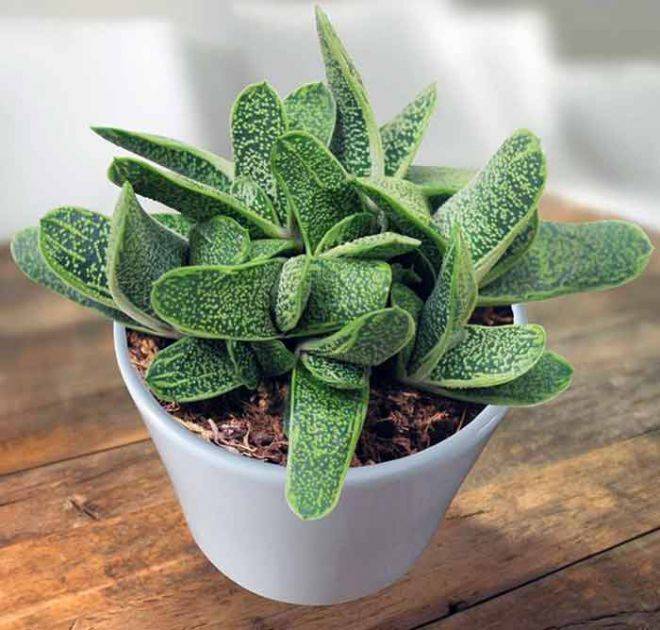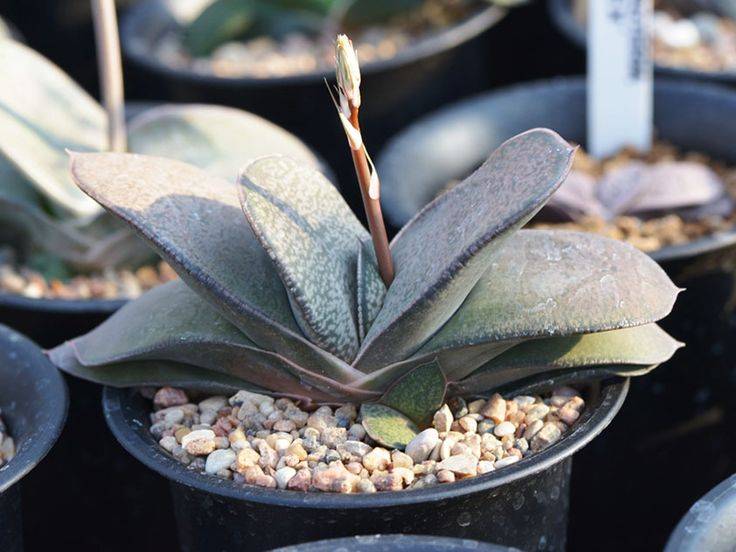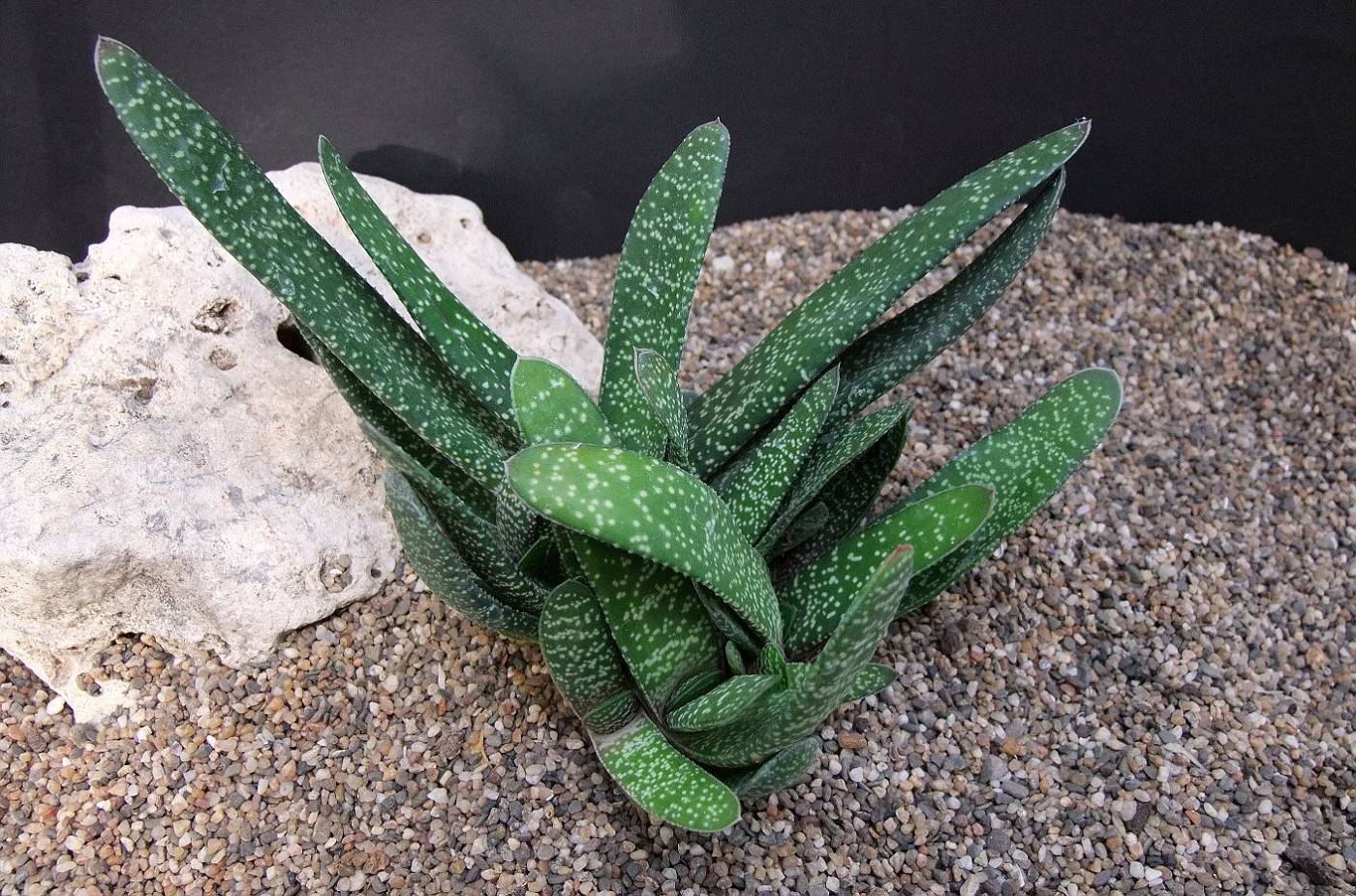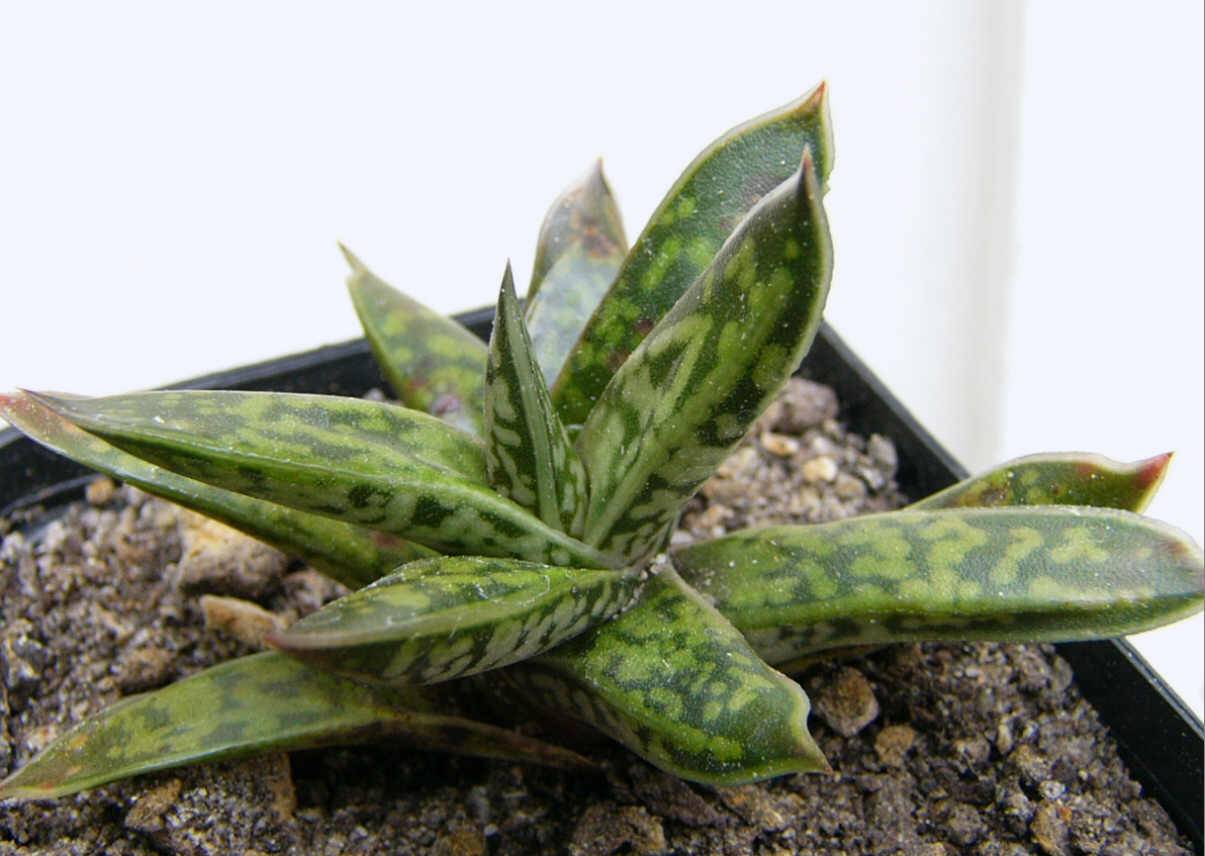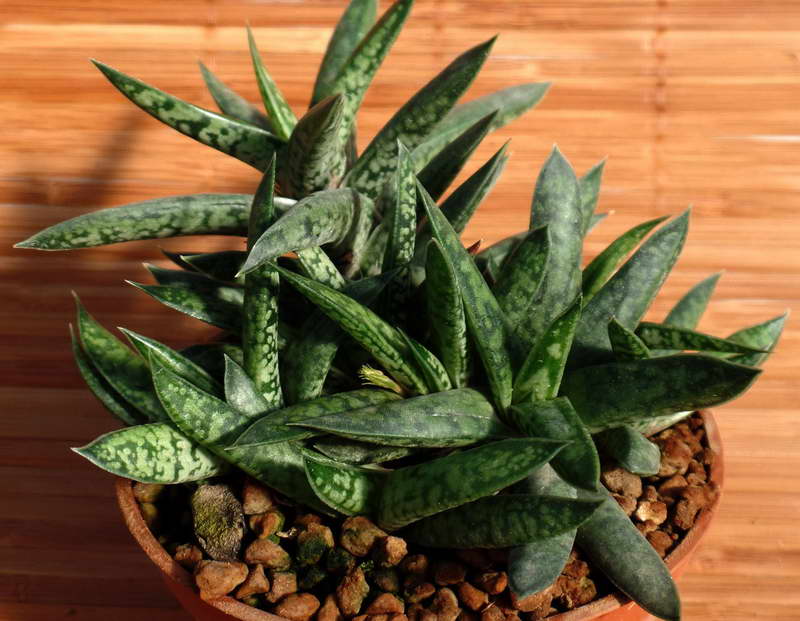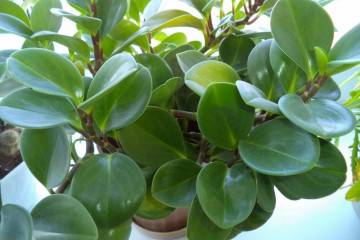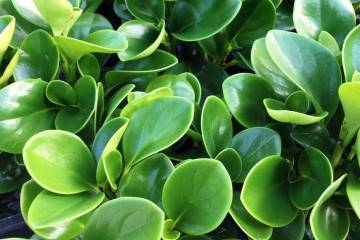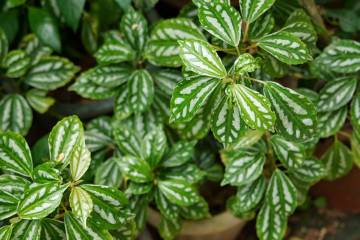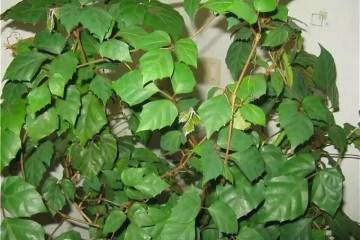Gasteria - home care
Content:
Indoor plants are striking in their diversity. They differ in origin, appearance, soil and maintenance requirements. Succulents have gained popularity due to their unusual appearance and unpretentiousness. Gasteria, home care for which many are interested in, is one of these colors.
Gasteria - what is this flower
The plant belongs to the Asphodelic family of succulents. South Africa is considered the birthplace of culture.
A short description of what it looks like
The name of the flower is translated as "pot-bellied vessel". Indeed, there is a slight swelling near the bottom of the perianth. In nature, the height of a succulent reaches a meter, at home it grows only up to 30 cm.
The stem of the succulent is very short, the leaves are tough, arranged in two or more rows. They can be of different shapes, have a dark green tint with different spots and stripes. The length can reach 25 cm, the surface is most often smooth, the top is sharp or rounded.
Gasteria is a flowering succulent. Peduncles have a variety of shades, reach a height of up to 70 cm. Flowers of an original shape, similar to an amphora, are collected in inflorescences. Flowering lasts approximately 30 days.
Varieties of home flower
The species of the flower of Gasteria are very diverse. Each is characterized by the presence of certain features and properties.
Gasteria verrucosa
The variety is very popular with indoor plant lovers. Represents long leaves collected in rosettes of dark green color with white small bulges. Verrucose peduncles are long, can reach up to 80 cm, flowers are red or pink with the addition of green.
Gasteria marble (Gasteria marmorata)
The culture forms a rosette of wide green leaves. It is distinguished by the presence of silvery spots located in a chaotic manner. Flowers are orange-red, small in size.
Gasteria maculata
The houseplant Gasteria spotted is medium in size. Its second name is waste paper. The leaves are long and smooth, with a pattern of white spots on a dark green background. Gastria's flowers are bright red, with a green edging along the edge.
Gasteria armstrongii
Small succulent. The leaves are small, oval-shaped, dark green in color. Flowers are small, pink-green, bell-shaped.
Gasteria tiny (Gasteria liliputana)
The plant is miniature. Green leaves with white spots form a rosette. Peduncles are small, up to 30 cm. Flowers are pink-green, small in size.
Gasteria batesiana
A small plant with rosettes formed by long saber-shaped green leaves with light tubercles. The flowers are pink-orange in color.
Gasteria Little Warty
A small attractive plant with oval leaves, dark green with white dots. Below, the leaf blades of Little Varti Gasteria are colored pink.
These are just some of the types of indoor flowers, but there are quite a few of them. In most cases, they differ in the size and shape of the sheets. For example, in Gastria glomerate, the leaves may even have a bluish tint.
How to care for Gasteria at home
The succulent gasteria is an unpretentious plant. However, there are some features of the content of the flower that should be considered.
Illumination and temperature conditions
In the warm season, the culture is provided with temperatures up to 25 degrees Celsius. In winter, it is recommended to move the pot to a cooler room, where the temperature remains at 15 degrees. These conditions will allow the plant to grow and bud better.
The plant loves diffused light. It is better to leave the flower in partial shade. Direct sunlight is not desirable, but full shade is not suitable. In the absence of light, the culture grows poorly and does not bloom.
Watering rules and humidity
The culture loves low humidity in the room, so it does not need to be sprayed. Like any succulent, the flower prefers dry air and does not require frequent watering. Irrigation is carried out if necessary, after the soil has dried.
Top dressing and soil quality
For planting a flower, it is better to take a special soil for succulents. It can be made at home. To do this, mix garden and turf soil, sand and some kind of baking powder (crushed brick, charcoal). Peat is not used. A plant is planted in the prepared soil.
With high-quality care and timely transplantation into the renewed land, the succulent does not require feeding. If necessary, you can fertilize the culture with weak solutions of special agents. The procedure is carried out no more than once a month.
Flower container size
A wide, shallow container is best for gastria. This will avoid decay of the root system. It is imperative to have a drainage hole so that excess moisture does not linger in the pot.
Pruning and replanting
Most succulent varieties do not have tall stems, so the flower does not need constant pruning. It is recommended to remove old and dried leaves in order to prevent the appearance and development of various pests.
The transplant is carried out with an increase in the root system. As a rule, the procedure is required every couple of years. The plant is removed from the old pot along with the soil and transplanted into a larger container.
Flowering and dormant period of the plant
The dormant period of the plant in winter. At this time, Gasteria provide a lower temperature, practically do not water and do not feed at all.
Blooming at home is rare. If Gasteria is satisfied with all the conditions and care, then flower stalks appear in spring or summer. After some time, flowers bloom with a bright color from pink to green shades.
Reproduction using seeds or separation of children
Reproduction of gastria can be done in two ways. Both have some quirks worth considering.
Seeds
Seed growing takes some time. It is required to prepare a suitable and loose soil. The soil is moistened and seeds are poured over it. The container is covered with glass or foil, left in a warm place. The soil is periodically moistened.
After a couple of months, the first shoots will appear. When the plant already has 4 leaves, it can be transplanted into a separate pot to a permanent place.
Department of children
This method is much easier and faster.In an adult plant, small children are often formed nearby. They are separated and dug up. Together with the soil, the sprouts are placed in new pots and watered well. After a while, the plant will begin to develop and grow.
Gasteria can be propagated using leaves. Separate one from an adult flower, sprinkle the cut with crushed coal and dry a little. After a couple of days, they are placed in a moist soil. After about a month, the first roots will appear and the sprout can be transplanted to a permanent place. Succulent grows for a very long time.
Growing problems, diseases and pests
Growing a crop is pretty easy. Problems arise only from improper care of gastria:
- With an excess of water, rotting of the leaves and root system begins.
- The leaf plates become pale from lack of light.
- Severe yellowing of foliage, burns occur when exposed to sunlight.
- Reddening of the leaves occurs due to a lack of light, passes on its own.
The main pests of gasteria include spider mites, scale insects, and aphids. Preventive insecticide treatment will help prevent this.
Gasteria is a wonderful and unpretentious plant. Even a beginner can handle it. The flower does not have a negative effect, but even benefits. With proper care, the culture will delight you with abundant flowering and beautiful flowers, and a variety of varieties will allow you to choose the one that will be more pleasant at home.

